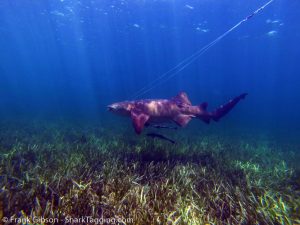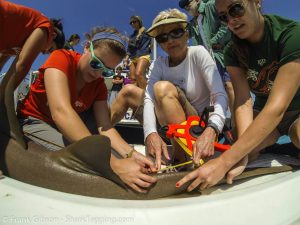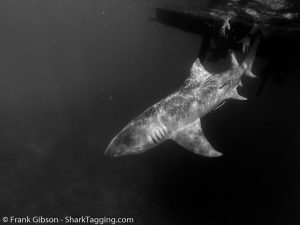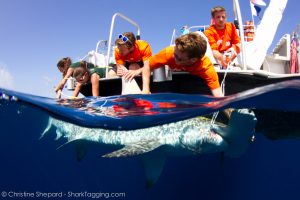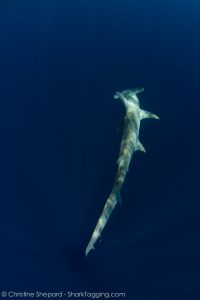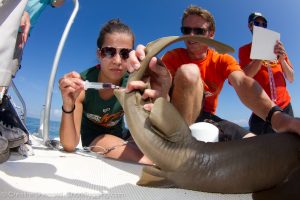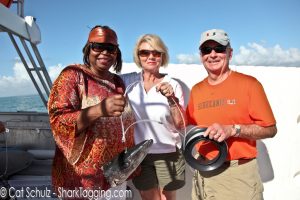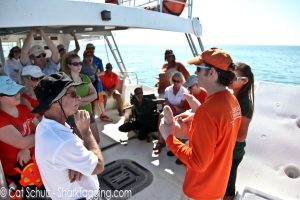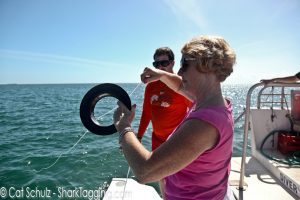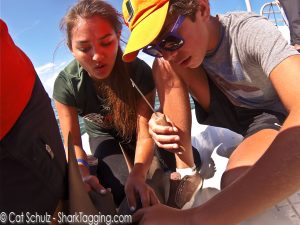Shark Tagging with AMI Kids
By: Hannah Calich, RJD Graduate Student and Intern
Friday’s trip with AMI Kids was an intimate one with only six individuals from AMI, five RJD interns, and our awesome captain, Ramon. Once everyone got to the boat we did a round of introductions, went over gear deployment, and we were on our way! We decided to set our gear at one of Ramon’s favorite sites, Solider Key. After the students helped us deploy the gear we recorded the environmental conditions and took a break for lunch.
After lunch our trip leader, Pat went over RJD’s shark workup procedure and we went back to check the lines. Despite our first few hooks coming back empty we remained hopeful because something was clearly nibbling on our bait. When line 9 came up it was clear we had hooked something. We quickly brought the line in and saw we had caught a nurse shark! Everyone rushed to their posts and got ready to collect some samples. Unfortunately, as we were trying to restrain the shark it managed to slip the hook and swim away. We determined it was a male based on the presence of claspers, and estimated he was approximately 2.1m long. After resetting lines 9 and 10 we left our sampling site and went for a quick swim while we waited for our lines to soak.
After a fun and refreshing swim we went back to check our gear. Similar to our first set, as we pulled in the lines we could see something was biting our bait, but one by one the lines came back empty. By line 10 we were all pretty sure that the only shark we were going to see was the one that got away. Then all of a sudden there was tension on the line! We pulled in line 10 to find a large nurse shark on the other end! Once the RJD team had quickly and carefully restrained the shark the students went to work helping us collect data. The students helped us determine we caught a 2.4m long male nurse shark. We collected a small fin clip sample, took some blood, tagged him, and set him free. He was in great condition and quickly swam away.
While it was a slow start to the day, in the end we were able to show a great group of students a powerful and beautiful animal while collecting data to help protect sharks, I cannot think of a better way to spend the day!



